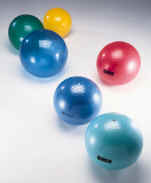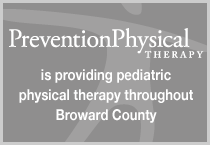
INFANT MASSAGE
Massage is within physical therapy clinical skills and can be integrated into providing both a beneficial and bonding time with your child. Infant massage has excellent proven benefits behind the effectiveness of providing massage to your child. Prevention Physical Therapy can educate you towards the basics of infant massages. However, there is certifications for parents to obtain for infant massage. The certification is provided by the International Association of Infant Massage. Below are some links providing information on infant massage and also the benefits from providing infant massage to your child:
Reduces stress hormones
Relaxation
Interaction with adults
Stimulation of the nervous system
Facilitates weight gain in preterm infants
Alleviates depressive symptoms
Reduces pain
Improve immune function
Alters EEG in the direction of heightened awareness
Increased circulation
Deeper and sounder sleep patterns
Reduction in gas and colic symptoms
More efficient digestion
Increased body awareness for the infant
This following excerpt is from the University of Miami Touch Research Institute:
Research from experiments conducted at the Touch Research Institutes at the University of Miami School of Medicine and Nova Southeastern University has been cited for the clinical benefits massage has on infants and children. Tiffany Field, Ph. D., director, noted that the research "... suggests that touch is as important to infants and children as eating and sleeping. Touch therapy triggers many physiological changes that help infants and children grow and develop. For example, massage can stimulate nerves in the brain which facilitate food absorption, resulting in faster weight gain. It also lowers level of stress hormones, resulting in improved immune function."
Another article is by author Jane Spehar:
The results of several studies showed that infant massage alleviates the stress that newborns experience as a result of the enormous change that birth brings about in their lives after the 6-9 months they have spent in the womb. Both premature infants and full-term babies need the relaxation that comes from massaging and moving their limbs and muscles. In infants with colic, massage provides the relief necessary to disperse gas, ease muscle spasm, tone the digestive system and help it work efficiently. Some techniques even help bring relief from teething and emotional stress. The stimulation an infant receives from massage can aid circulation, strengthen muscles, help digestion, and relieve constipation. The bonding that occurs with massage between a parent and child enhances the entire process of bonding that comes with contact through all of the senses, including touch, voice, and sight. It affords a physical experience of quality time between the parents and the child as well as with any significant others in a baby's life.
Return to the top of the page
INFANT THERA-BALL EXERCISE
Thera-ball exercises are some of the core strengthening activities for infants. The ball adds a tool that has no boundaries to increase trunk, leg, and arm muscle strength. This ball has been used in therapy for many years and is one of the most efficient ways of strengthening and promoting developmental transitions. The ball is also known as the Swiss ball.
Therapy exercises, especially for infants, are only to be performed with the supervision of a physical or occupational therapist. Home exercises a therapist may recommend for a program may include the use of the Swiss ball. The following picture is of a Swiss ball. Please contact us for information on purchasing the Swiss ball and for education on the use of the Swiss ball.

Return to the top of the page
PEDIATRIC EXERCISE
Pediatric exercise consists of various activities concentrated on increasing the following: strength, flexibility, balance, coordination, and gait abilities. Neuromuscular development and treatment is at the core in developing pediatric exercises. Please view the link to the left called therapy approaches then click NDT.
Exercises are developed by a professional PT, OT, or ST for obtaining goals created by the child, family, and therapists. Exercises are able to be performed with the therapists and also developed into home exercise programs for the continued care at home. Below are exercise categories which list various activities for your child:
- Developmental activities (for example, a physical therapist may encourage a child to crawl toward a toy that is just out of reach)
- Therapeutic exercises (such a strengthening and flexibility exercises designed for a particular injury)
- Balance and coordination activities
- Adaptive play activities
- Mobility training
- Aquatic (water) physical therapy
- Safety and prevention programs
- Educational (wellness) workshops (covering topics such as avoiding injuries)
Copyright 1995-2002 The Nemours Center for Children's Health Media
Return to the top of the page
PEDIATRIC YOGA
Pediatric yoga has been implemented for various physical, mental, and behavioral reasons. Yoga has been in practice for thousands of years and implementing the practice of yoga into pediatric rehabilitation is allowing for an environment with increased involvement of not only the child, but the family as well.
With benefits of yoga going to everyone in the family, interaction increases allowing for a home environment conducive for relaxation and incorporation of home exercises. Here are some benefits seen from the use of pediatric yoga:
- Increasing strength, balance, flexibility, and coordination
- Challenges the motor planning and motor control of a child
- Calming to child's behavior secondary to concentration on performing physical task
- Decreased physiological outputs such as heart rate and blood pressure
Return to the top of the page
Click on a link below to travel to a different PPT Department
Pediatrics | Personal Injury | Industrial & Ergonomic
Pediatric Physical Therapy | Home Health Care | FitnessPrograms | Biofeedback/NMES Treatment
Casting/splinting/orthotic referrals | Hippotherapy | Orthopedic & Muscular | Neurological
NDT | Biofeedback/NMES | Taping & Wrapping | Fitness & Wellness | Splinting/Casting
Zero months to six months | Six months to one year | One year to two years | Two years to five years
Five years to ten years | Ten years to eighteen years | Infant Massage | Infant Ball Exercise
Pediatric Exercises | Yoga | Tip of the Month | Doctor's Info | News & Presentations | Links
©2010 Prevention Physical Therapy. All Rights Reserved. |



